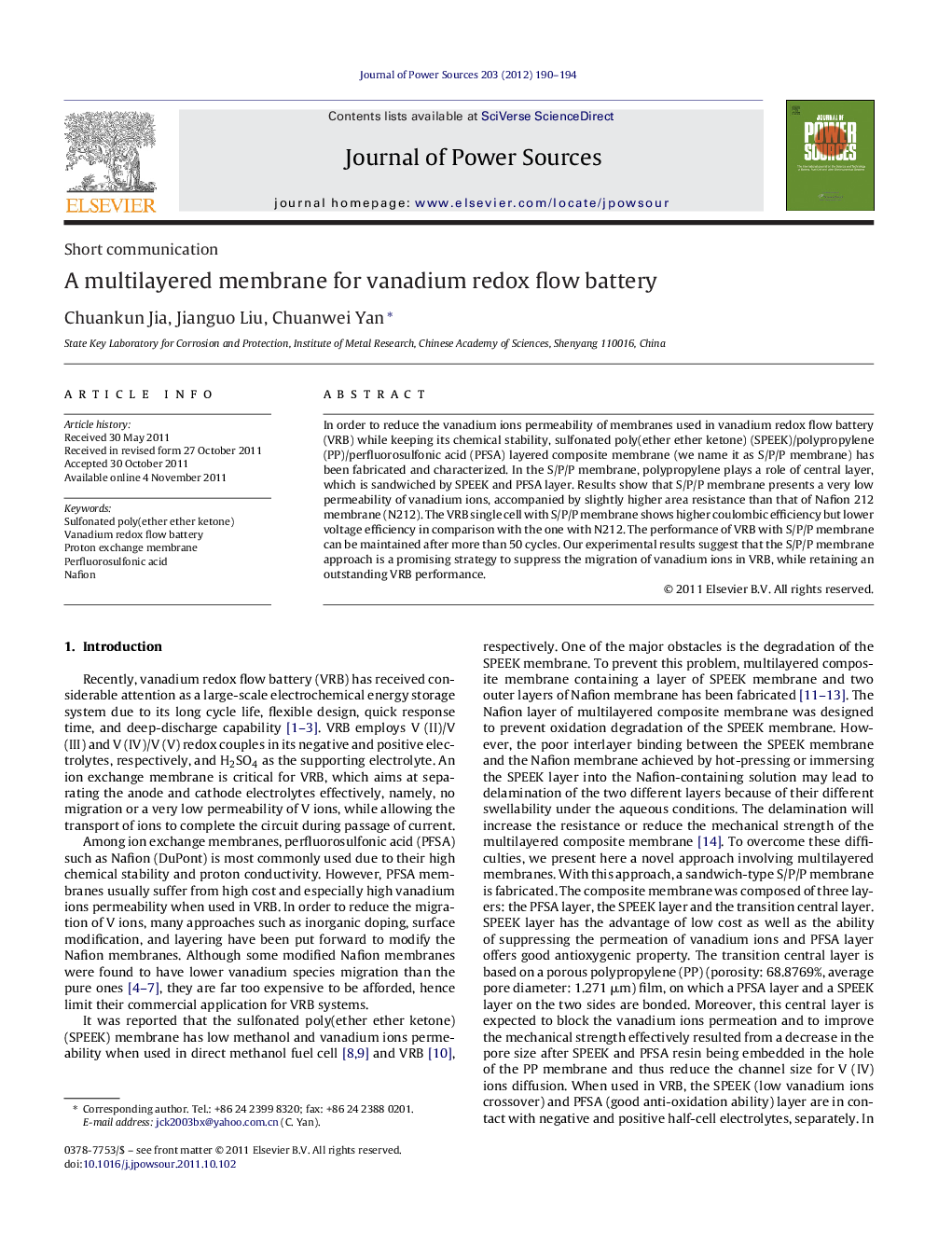| Article ID | Journal | Published Year | Pages | File Type |
|---|---|---|---|---|
| 1288352 | Journal of Power Sources | 2012 | 5 Pages |
In order to reduce the vanadium ions permeability of membranes used in vanadium redox flow battery (VRB) while keeping its chemical stability, sulfonated poly(ether ether ketone) (SPEEK)/polypropylene (PP)/perfluorosulfonic acid (PFSA) layered composite membrane (we name it as S/P/P membrane) has been fabricated and characterized. In the S/P/P membrane, polypropylene plays a role of central layer, which is sandwiched by SPEEK and PFSA layer. Results show that S/P/P membrane presents a very low permeability of vanadium ions, accompanied by slightly higher area resistance than that of Nafion 212 membrane (N212). The VRB single cell with S/P/P membrane shows higher coulombic efficiency but lower voltage efficiency in comparison with the one with N212. The performance of VRB with S/P/P membrane can be maintained after more than 50 cycles. Our experimental results suggest that the S/P/P membrane approach is a promising strategy to suppress the migration of vanadium ions in VRB, while retaining an outstanding VRB performance.
► A sandwich-type SPEEK/PP/PFSA composite membrane has been prepared. ► The delamination phenomena of PFSA and SPEEK layer can be avoided with this design. ► The SPEEK and PFSA layer are exposed to negative and positive half-cell electrolytes, respectively, in order to use the advantages of the SPEEK layer (low permeability of vanadium ions) and PFSA layer (good antioxygenic property). ► The S/P/P membrane displays much lower vanadium ions permeability and good cell performance compared to N212 membrane.
